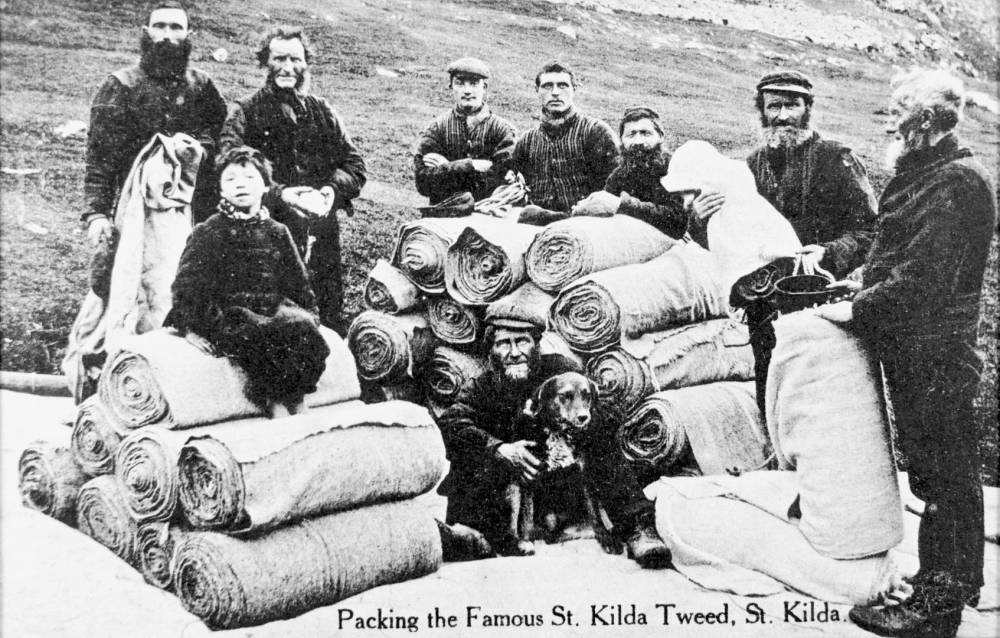St Kilda tweed
Am Baile/Edinburgh and Scottish Collection, Edinburgh Central Library
St Kilda tweed
There was a mixture of Soay sheep and black faced interbred sheep on St Kilda, which were a source of income for the islanders prior to the evacuation in 1930.
Sheep and cattle were brought off too, along with the islanders, apart from a few sheep. Lord Dumfries owned the island and ordered the sheep to be destroyed by 1933. Pure bred Soay sheep now live there today and there has been great interest in researching and monitoring the flock for the past 25 years.
This research has shown that the population crashes then builds up again, in 12-14 year long cycles - likely due to ecology and grazing pressures etc. The population is currently stable, but the size of the sheep seems to be getting smaller.
When the islanders lived on St Kilda, wool was part of their income, with the weaving done by the men as a winter occupation. McLeod of Skye came to collect the tweed and used the old Scottish yard to measure its value! The warp of the black faced sheep and the weft of the Soay combined strength and warmth in the fabric.
There are only two existing bits of St Kilda tweed that are known about, one of which is stored at West Highland Museum in Fort William. The listing reads: 'Piece of tweed 3.5 yards x 30". Natural colour with brown flecks. Among the last tweed woven on St. Kilda in about 1930'.
More information on visiting the area can be found here.
